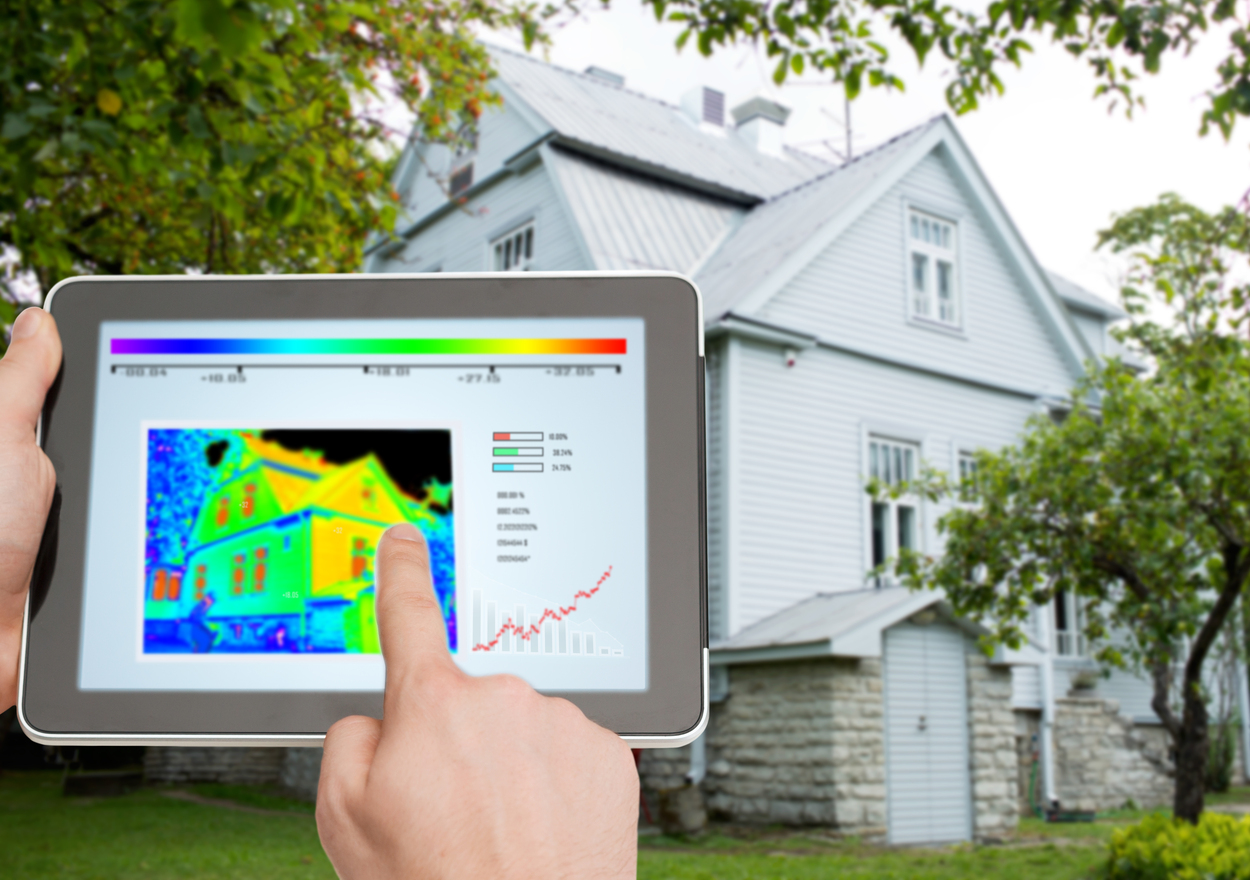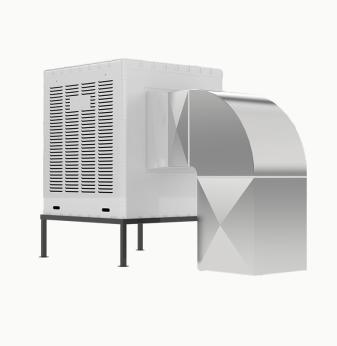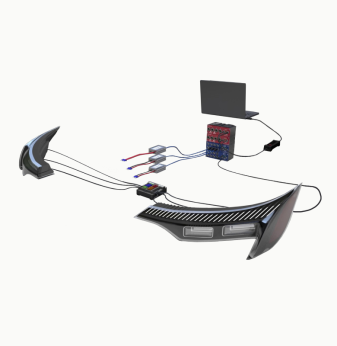HEMS as a Strategic Convergence Point: Why Car Makers and Industrial Giants Are Investing in Energy Automation

Home Energy Management Systems (HEMS) have long been perceived as tools for energy optimization in residential buildings, with early adoption focused on solar self-consumption, basic device control, or HVAC automation. However, recent trends show that HEMS is evolving into a critical infrastructure layer — one that connects electric vehicles, heat pumps, batteries, solar PV systems, and grid services into a unified control loop.
What makes this transformation especially compelling is the growing interest from sectors far beyond the traditional building automation domain. Automotive giants such as Volvo, Ford, Porsche, and Nissan are now actively investing in HEMS technology. At the same time, industrial automation leaders and energy utilities are embedding their own logic and protocols into these systems. This convergence is changing the role of HEMS from a "home gadget" into a platform where smart energy, mobility, and industry collide.
From Fragmentation to Integration
Historically, each component of a home’s energy system operated independently. EV chargers used proprietary logic or communicated only with the vehicle, solar inverters were locally optimized, and heating systems responded only to thermostats. The homeowner acted as the integrator, manually managing schedules and trade-offs.
HEMS changes this by introducing a central intelligence layer that automates coordination across devices. For example, a properly designed HEMS can delay vehicle charging to coincide with peak solar generation, or prioritize hot water heating during periods of excess wind power. This optimization is no longer just about comfort — it’s also about participating in broader energy flexibility markets.
What’s driving this change is the rapid electrification of everything: mobility, heating, and storage. As residential power loads grow and become more volatile, HEMS serves as the orchestration layer that ensures local energy assets act in harmony — and in sync with the grid.
Why Automotive Companies Are Betting on HEMS
For car manufacturers, the move into home energy systems is not just a diversification strategy — it's a necessity.
Electric vehicles today represent the largest mobile battery available to most consumers. However, unless integrated with the home energy system, this battery remains underutilized. By enabling vehicle-to-home (V2H) and vehicle-to-grid (V2G) use cases, carmakers can turn their vehicles into energy assets. But this integration cannot happen in isolation. It requires a seamless link to power meters, PV inverters, HVAC systems, and grid signals — all of which fall under the domain of HEMS.
Let’s consider a few examples:
Volvo has been piloting energy-aware charging systems that adjust based on home generation and real-time prices. Ford’s F-150 Lightning offers intelligent backup power functionality, enabling the vehicle to act as a home energy source during outages. Porsche and Audi (part of the Volkswagen Group) are exploring bidirectional charging that interfaces with home battery systems and dynamic pricing models. Nissan, through its extensive V2H experience in Japan, offers pre-integrated EV + charger + energy management bundles.
In each case, the car is no longer just a means of transport — it becomes a core participant in home energy optimization.
A Platform Play: What the Industrial Sector Gains
From the industrial perspective, HEMS represents a rare point of convergence with high consumer adoption potential. Smart meters, inverters, and heating systems already speak protocols like Modbus, KNX, or EEBUS. What they often lack is orchestration logic and inter-device awareness. For industrial players, integrating into a modern HEMS platform provides:
- A pathway to bundle products (e.g., inverters + EMS)
- Real-time control over device behavior via cloud or edge logic
- Opportunities to participate in grid flexibility markets (OpenADR, national DR programs)
- A way to enhance system security and future-proof interoperability
Moreover, HEMS acts as a data aggregation point — enabling predictive maintenance, customer analytics, and cross-sell/upsell potential that industrial players couldn’t previously access from behind the meter.
Comparing HEMS Evolution: Traditional vs Strategic
| Attribute | Traditional HEMS (Smart Home) | Strategic HEMS (2025+) |
| Scope | Device-level automation (lights, thermostats) | Full energy orchestration (EV, heat pump, PV, battery) |
| Control | Local or app-based | Edge + cloud, real-time, grid-aware |
| Stakeholders | Homeowner, smart home vendors | Automotive OEMs, utilities, industrial integrators |
| Communication | Proprietary or siloed | Standards-based (OCPP, EEBUS, OpenADR, Modbus) |
| Goal | Comfort, UX | Flexibility, revenue generation, carbon reduction |
This evolution places new demands on the technical architecture of HEMS: embedded software must handle real-time logic, multiple communication layers, and resilient behavior under unstable network conditions. Moreover, cybersecurity becomes non-negotiable — especially when EVs or backup power systems are involved.
Engineering Implications: Multi-Protocol and Multi-Domain
A modern HEMS system is essentially a convergence stack. It must be capable of:
- Communicating with EVSEs via OCPP 2.0.1
- Exchanging price and control signals via OpenADR
- Managing local DERs via Modbus, CAN, or EEBUS
- Integrating with OEM APIs (e.g., for SoC of EV battery or remote commands)
- Providing HMI layers that follow automotive-grade usability
- Enabling fail-safe operation during outages or network loss
Promwad works with both device manufacturers and system integrators to deliver embedded solutions that meet these demands. Our expertise spans real-time operating systems, secure firmware development, PCB design, and protocol bridging — enabling clients to build custom HEMS controllers or gateways that are interoperable, secure, and scalable.
A Multi-Billion Euro Opportunity
According to Wood Mackenzie and BNEF, the global market for residential energy flexibility could exceed €20 billion annually by 2030. This includes revenue streams from peak shaving, ancillary services, dynamic pricing response, and capacity markets. The only way for homes to participate at scale is through HEMS-driven automation.
At the same time, automotive OEMs are expected to create bundled offerings where EVs, chargers, batteries, and energy management systems are sold as one integrated package. Tesla, in fact, has already moved in this direction. Traditional carmakers are following suit — and HEMS is the layer that connects the dots.
This shift is not only about product integration — it’s about controlling the customer experience and creating new digital services revenue. For OEMs, HEMS becomes the user-facing part of the energy value chain.

What’s Next: Scaling Beyond Homes
While the “H” in HEMS stands for “home,” the architecture being developed today is quickly scaling toward multi-dwelling units, commercial buildings, and industrial microgrids. The same principles — flexible energy control, EV coordination, grid synchronization — apply at larger scales.
This opens the door for collaboration between Promwad’s energy, automotive, and industrial partners to co-create scalable control solutions, cloud APIs, and embedded gateways that serve not just homes, but entire fleets and distributed energy hubs.
Final Thoughts
HEMS is no longer just a smart thermostat with a few extra features. It’s a strategic platform — one that draws investment from automotive leaders, industrial tech firms, and energy utilities alike. Its value lies not only in saving energy at home, but in enabling real-time participation in grid flexibility markets, controlling peak loads, and integrating energy assets like EVs into broader infrastructure.
Promwad sees this as a systemic engineering challenge: one that brings together embedded development, connectivity protocols, real-time systems, and secure device orchestration. And as the industry moves toward software-defined everything — from cars to inverters — HEMS will be the control layer where it all comes together.
To stay competitive, product companies must ensure their devices and platforms are ready to speak the language of HEMS — across domains, protocols, and use cases.
If you’re ready to engineer your next product to integrate with this ecosystem, we’re ready to help.
Contact Promwad to learn how we can support your development of HEMS-ready technologies that connect mobility, energy, and automation.












